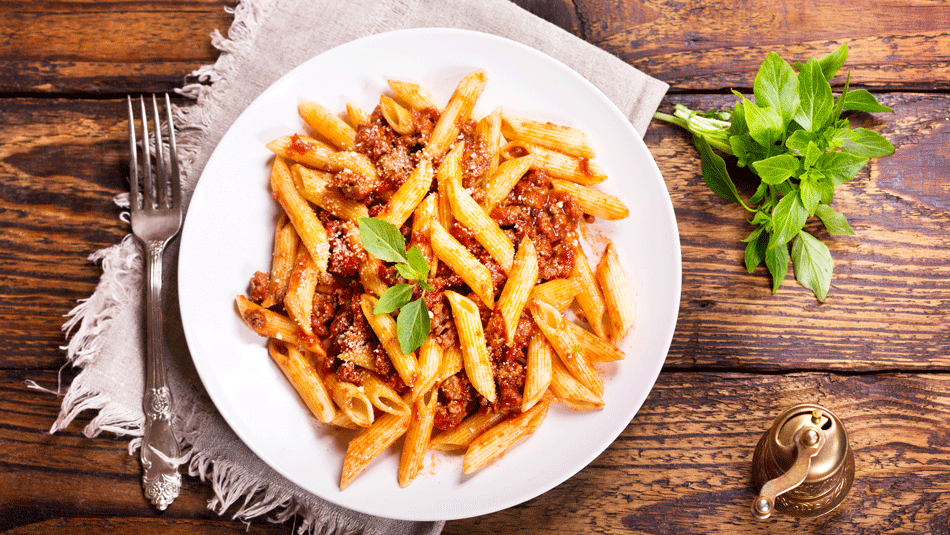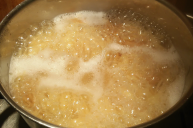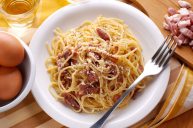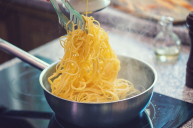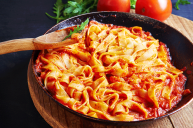There's been a rumor going around that you can save time making pasta by simply cooking it in the sauce and skipping the whole bit with the boiling water to create pasta water. I first heard about this a few months ago in a passing conversation with some friends. It seemed crazy to me - and I've used some unique strategies to make a pasta dish in my time.
Videos by Wide Open Country
I decided to investigate and headed to the internet. PopSugar has a long article experimenting with this cooking process. Their results were scary - declaring it the single worst way to make pasta ever. Other people had different things to say. Folks over at The Fifth Flavor found it made the pasta 'toothsome' (not quite al dente), but didn't think think that was a bad thing.
It was quickly apparent that the question of perfect pasta was even bigger than just wondering if it could be cooked in the sauce instead of the cooking water.
Let's start with water.
If you move beyond the question of sauce, there's still the matter of water. How much water do you need? Should it be hot or cold? Does it need to be boiling before you put the pasta in, and should you keep it at a boil? When it comes to add salt, how much is too much? There are many variables and even more opinions on the matter.
It turns out that the volume of water is the least important component. Tradition calls for bringing a large pot of water to a rolling boil on the stove over high heat before putting any pasta in. It turns out, you can use far less water, with a lower cooking time, and still end up with perfectly cooked pasta.
Serious Eats wrote an extensive piece on the mechanics of boiling water and pasta. After several tests for timing, taste, and texture, they ultimately concluded that dry pasta and homemade pasta alike needs to just be covered in water to cook effectively. They're not the only ones who feel this way. The New York Times came to a similar conclusion.
So if you can cook pasta in less water, what about the boiling part? Is it better to start with hot water or cold water? This is perhaps the most divisive part of pasta technique. People feel very strongly about their preferred method of cooking.
Those who start with hot water feel like they're saving a few minutes from the boiling time, however we could make an argument that using cold water is best. Bringing the water to a boil will kill any straggling germs or bacteria that might have translated from your faucet to the pot -- and when you start with warm water, you're not killing them off entirely.
Ultimately, the pasta will cook to a very similar result. The aforementioned Times article discusses that. That doesn't mean the methods aren't different in operation. Some people prefer cool water because the noodles don't stick together immediately. However, the longer time it takes the water to boil can lead to sticky noodles anyway.
There are some things everyone seems to agree on. The universal truth about pasta is this: salt the water. There seems to be no disagreement that salting the water adds to the flavor of the pasta. It's a simple step, but it makes a huge difference in the final result.
While you might not be aware of the saltiness of the noodles, once you try flavorless pasta, you will understand. Additionally, when using whole wheat pasta, feel free to add even extra. Your water should be as salty as the ocean. Don't hold back, because the reserved pasta water can serve as an emulsifying agent.
So what's the best way to make pasta?
To make an exceptional pasta meal, start with a clean pot or deep sauce pan and enough water to adequately cover your pasta. Now's the time to decide if you want to start with cold water or let it boil. Experiment with this and find which way you prefer or the one that suits your pasta needs best.
Regardless of how you handle the water temperature, throw in a healthy dose of salt. Some people put olive oil in the water to decrease sticking. Whatever you do, don't do that.
It will make the pasta slippery and less likely to bind to the sauce. Additionally, oily water doesn't work well with sauces that require pasta water as a binder. It can also splash out of the pan and leave you with a tornado-shaped scar on your stomach. Ask me how I know.
Cook the pasta until just before its desired tenderness. Start with directions for the shape of pasta you are using, and tweak it to fit your taste. Once it's done, drain your pasta, but save some of the water to add back in to your sauce if you need to. Thicker sauces and thinner sauces both benefit from the reserved water from drained pasta, and it plays an important role in tying the whole dish together.
Like the oil trick, rinsing your pasta should be avoided. It strips the starch and cools your noodles down. Nobody wants room temperature noodles struggling to cling to their sauce. Instead of rinsing your pasta, toss it into the saucepan and let it mingle with the sauce for the last few moments of cooking.
As you practice, you'll get a feel for how long you should cook your pasta in water before adding it to the sauce. There isn't just a lot of theory and technique around cooking pasta, but there's also a lot of theory on matching the right pasta with the right sauce.
We have a great pasta guide to which shapes go best with which sauce, but we won't tell if you mix it up. Decide what kind of pasta you're cooking, get in the kitchen, and get cooking!
